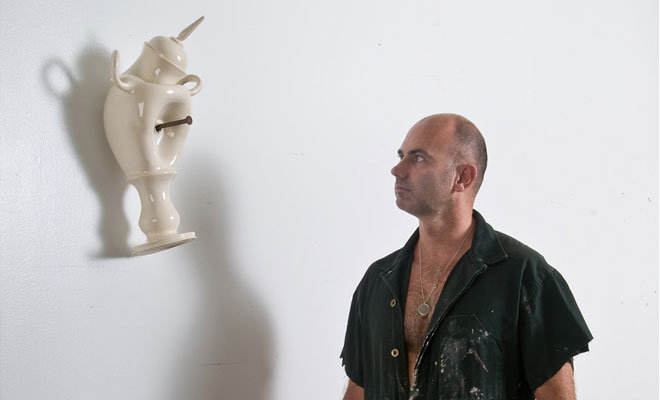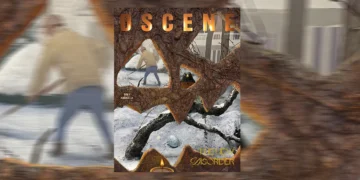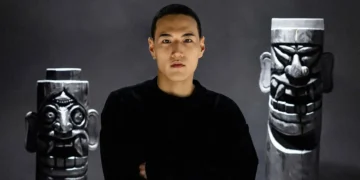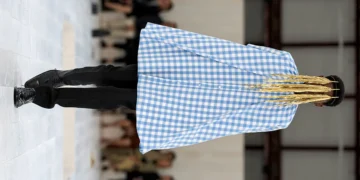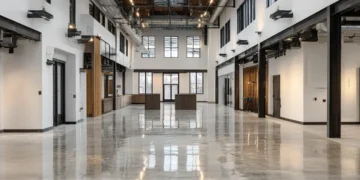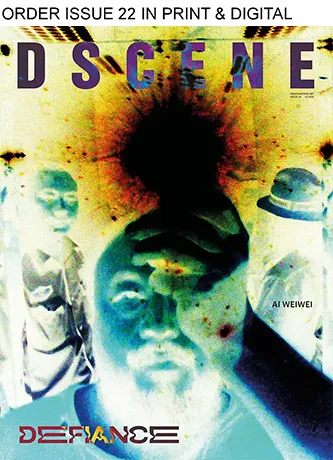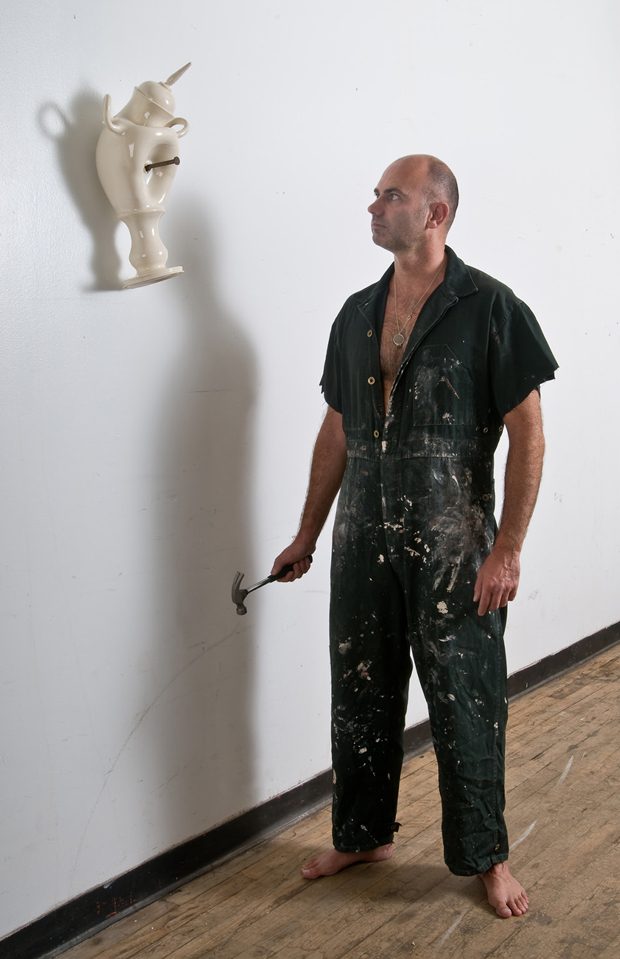
For DESIGN SCENE Magazine issue 020 artist LAURENT CRASTE sits down for an exclusive interview with our editor KATARINA DJORIC to talk about his creative process, inspirations, as well as current and upcoming projects.
AVAILABLE NOW IN PRINT $22.90 & DIGITAL $3.90
What made you switch from veterinary medicine to art?
As a young teenager, I already wanted to live my life as an artist. But I was also passionate about biology, and pretty good at school in science. My social and family environment in France pushed me to a career as a learned profession (in law or medicine), so that I successfully completed my studies in veterinary medicine. Then, I went to Canada for a master’s degree in veterinary physiology. It was in Canada, freed from the social constraints of my native country, that I began to take classes in sculpture and then ceramics, and that I realized that I wanted to devote my life to it.
Read more after the jump:
How did you first get involved in ceramics and how did you recognize it as a material you wanted to continue to explore?
I started taking amateur sculpture classes where I discovered the plastic qualities of clay as a modeling material. I immediately felt a great affinity with this material, and developed manual skills with ease. Later, I took a professional course in ceramics, and that’s when I discovered the facets of this material related to the objet d’art, crafts and decorative arts, in addition to those related to sculpture. It is my interest in the sociological and political dimensions of the decorative arts that convinced me to continue working with this material.
What do you enjoy the most about working as a ceramic artist?
The work of ceramics, and porcelain in particular, is extremely demanding, both physically (kneading efforts, clay dust, firing heat, etc.) than mentally (porcelain is merciless and does not forgive any error). However, it is when I am in my studio that all my anxieties rest, that I feel free from all the oppressions of life. It is the liberating power of creation that pleases me the most in my job. More concretely, working as an artist is also enjoying the freedom of schedules, not having a boss. No mental or organizational straitjacket!
You also combine the ceramics with video art. Tell me more about that.
I use porcelain decorative objects as screens for video animations projections, in small installations where the technological material is totally invisible. There is a marvellous and almost magical effect of seeing flower decorations, portraits, gently moving on plates. These animations allow me to address other themes, more existential than socio-political, in my works. Flowers fade, flies appear and turn around annoyed portraits. I have the feeling that these works are in resonance with old vanity paintings.
Can you share a bit about the creative process and materials you use?
My creative process oscillates between spontaneity and reflection, brutality and delicacy. Spontaneity and brutality of the interventions on the objects, reflection on the concepts surrounding the socio-political scope of the decorative arts, and delicacy of all the stages related to the transformation of the porcelain . Because the whole process is conditioned by the characteristics of porcelain work, which requires manual dexterity and meticulousness.
How do you balance teaching and a studio practice?
I spend one or two days a week teaching at the College in the professional ceramics program. It is extremely stimulating to share your knowledge and experiences with young students, but also to be confronted with their requests, their desire to push the limits of the material, their thirst for exploration. This allows us to expand our own horizon, to be stimulated, even sometimes “shaken”, and to get out of our pattern. It is also very healthy from a mental point of view to leave the studio, because the studio routine is very lonely and can easily take on an obsessive character.
What kind of impact do you want to make with your art? What is the message?
My work evokes, in a tragicomic mode, the ideological destruction of works of art during revolutionary periods, whether political or religious, because they symbolize a social class or a confessional belonging. These destructions, which were believed to belong to the past, are on the contrary quite topical (it is only necessary to think about the recent destructions of some museums by the islamists of Daech). The growing economic inequalities of our societies could eventually lead to revolt, even revolutions, and to the destruction of possessions, including works of art, of the well-off. My works should sound like a warning….
How do you see the primary role of an artist in today’s society?
I can only speak for myself – I would not allow myself to assign a role to artists in society, for example by saying that artists must be engaged. I find it quite valid that an artist devotes himself to purely aesthetic explorations, but as far as I’m concerned as an artist, I need my works to have political significance, to awaken us to social inequalities. Or that they find an emotional resonance in people, to make us aware of the fragility and value of life.
What are you working on right now, is there a project you are currently obsessed with?
I continue to work on the archetypes of the decorative arts, but I slowly abandon the “cartoon” aspect of my works, by no longer including the tools (baseball bat, hammer, crowbar, etc.) in porcelain objects, and I push iconoclastic interventions further, so that the destruction of art objects is more radical, they become almost unrecognizable. The comic aspect of the works fades away, the anthropomorphism of objects is no longer present, and a more dramatic dimension appears. Besides, I call these new works “Dramatic Abstractions”.
For a little less than a year, I also explore the accumulation of objects and ornaments, stacked, thrown into piles, which evoke sorts of “mass graves” of objects.
But despite this darker trend, my style is still recognizable by the use of porcelain and the typical deformations of objects. So no break, but an evolution.
What is the first artwork you ever sold?
The first sculpture I sold was a neoclassical white vase nailed to the wall, called Iconocraste – 0. It was the very first example of a work in the Abuse series that launched my career in the visual arts. That said, before producing and distributing sculptural works, I worked for many years as a ceramist working on decorative objects, which I exhibited and sold in the network of contemporary crafts.
What work of art do you wish you owned?
I would not like to own, but live with the portrait of Madame de Pompadour, a pastel by Maurice-Quentin Delatour, a sublime work, characteristic of the French style of the eighteenth century, and more political than it seems. It’s in the Louvre, but I do not think I would get tired of living with it !
Who is your favorite living artist?
I would say the British artist Grayson Perry. His work made me aware of the potential of ceramic objects to be significant vectors.
What is next for you? How would you like to see your work evolve in the future?
I do not have a long-term vision and my projects evolve with my experiences in the studio. However, although I can not imagine putting aside ceramics, I would like to go back to drawing, particularly pastel, a medium associated with gentleness and delicacy, but which, by contrast, I would like to approach with brutality. and violence. A bit like I do with porcelain!
For more of Laurent’s work visit: laurentcraste.com
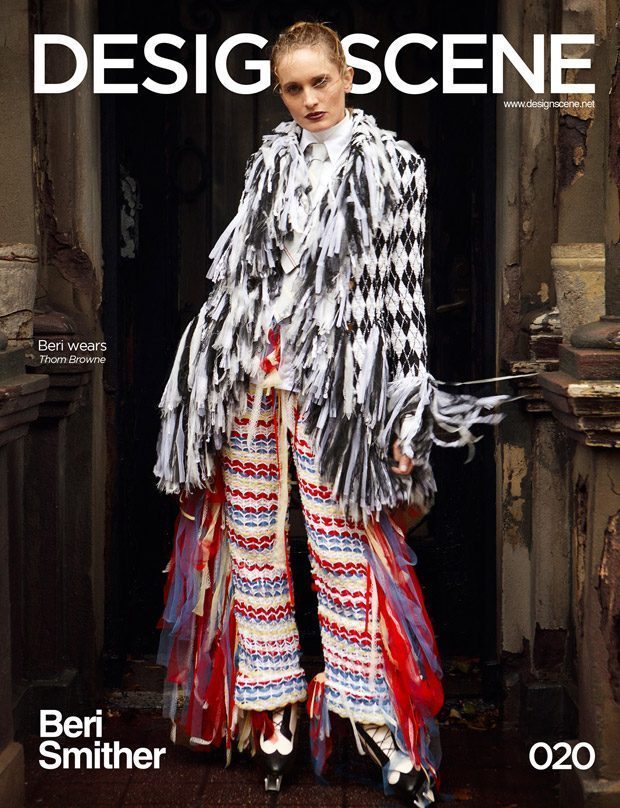 Available now in print & digital – in our DESIGN SCENE mag store.
Available now in print & digital – in our DESIGN SCENE mag store.
